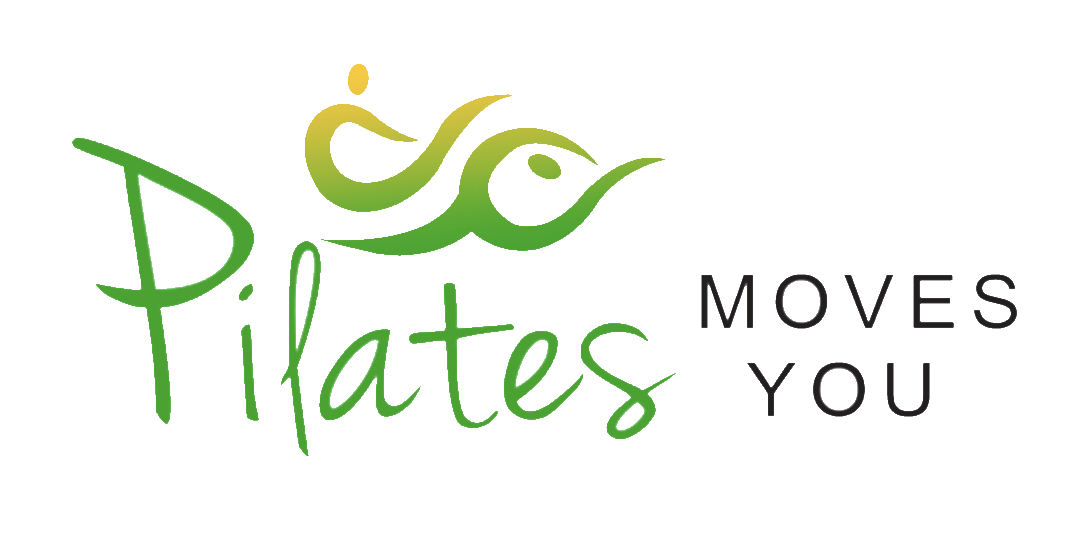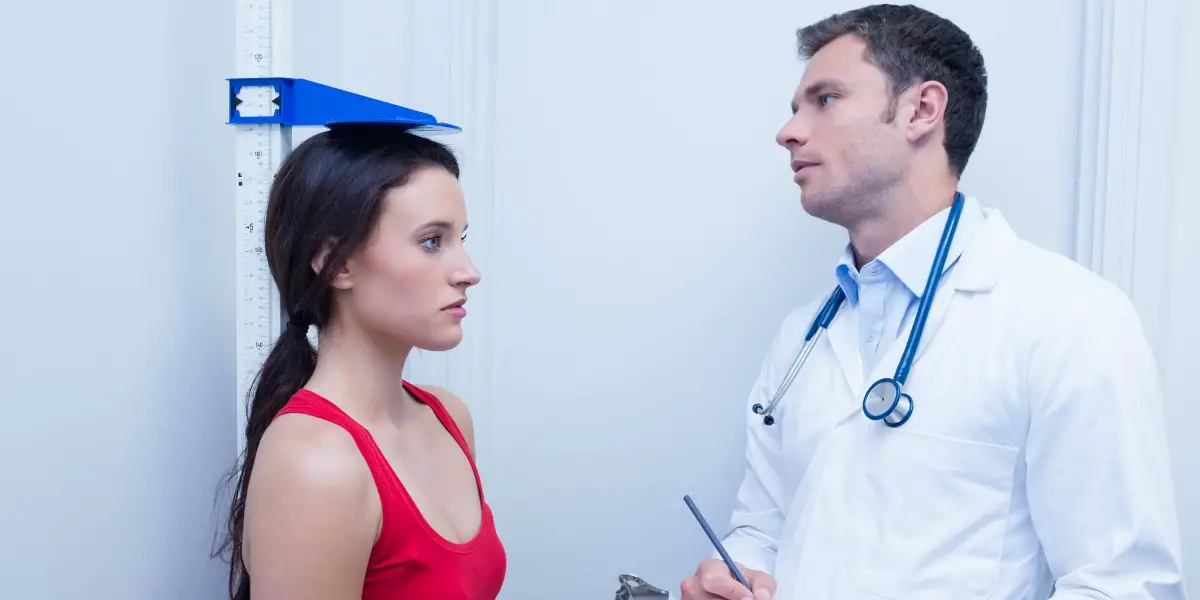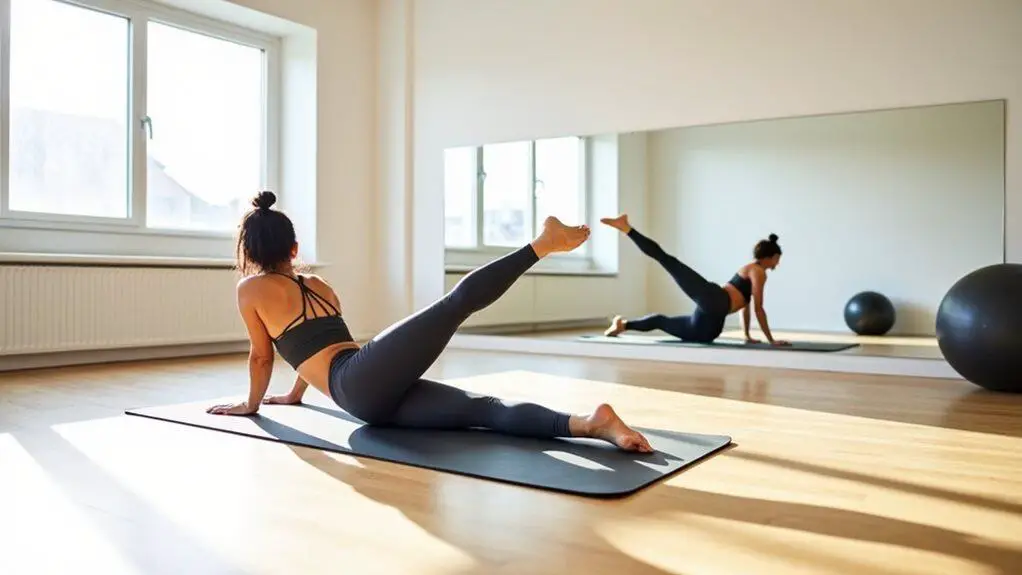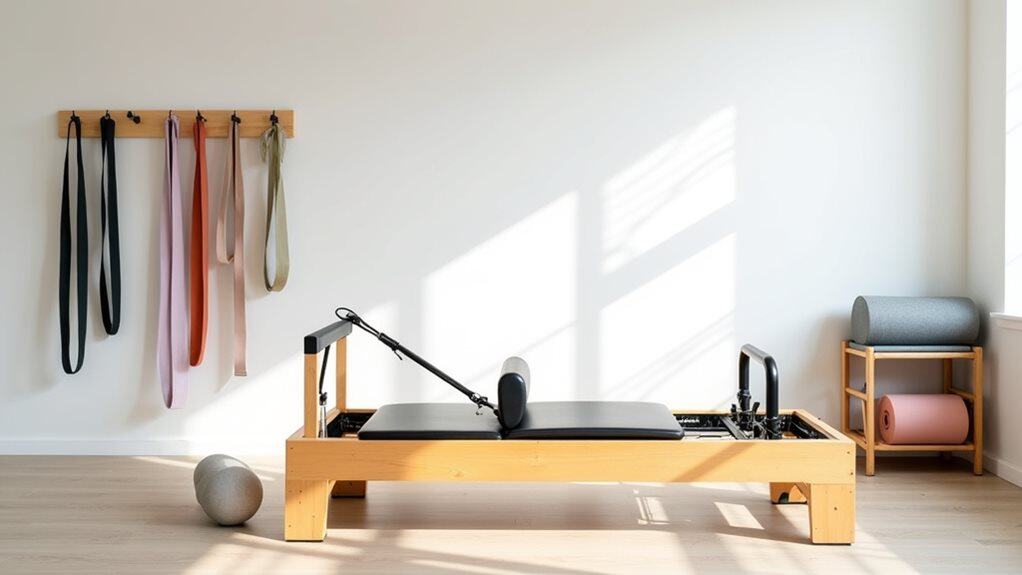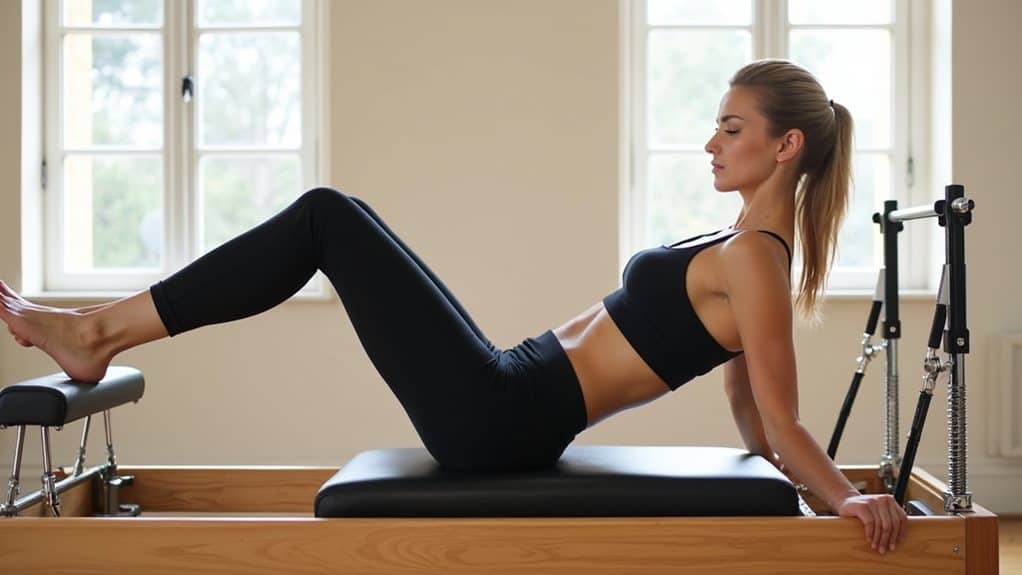Pilates has a reputation for making people taller, but is this reality or just a fitness myth? Anecdotally many practitioners of Pilates claim that they stand taller after practising Pilates, but what does the science say?
According to science, Pilates doesn’t actually make you physically taller. Instead, Pilates improves posture, which can increase the appearance of height. Pilates can help us achieve a natural neutral spine position whilst improving and enhancing the spines ability to move. Pilates can improve our ability to lengthen our spine through improved strength, awareness and posture.
Want to stand taller? Read on to learn more about how Pilates contributes to a taller appearance and what the science says about height and Pilates.
Pilates Can’t Make You Taller
When we are standing the postural muscles of the body are working constantly to keep us upright. There is a delicate balance between those at the front of the body and those at the back. Any habitual changes in the way that we sit or stand will affect their delicate balance and similarly may upset the natural length of the spinal ligaments. If you sit slumped at a desk all day this alters the angles of the curves of the spine, stresses the ligaments , muscles and discs. this can lead to pain.
The science is clear: Pilates can’t make you physically taller. Even though Pilates does lengthen the spine by increasing flexibility control awareness and strength, however this results in less than millimetres of actual height difference. Most of this is then negated quickly by the force of gravity when you stand up.
However, many people report appearing and feeling taller after doing Pilates. So if science says there is no real change in height, why is that the case? The truth is that Pilates can help a person look and feel taller in the following ways:
- Pilates can improve posture by strengthening core muscles
- Pilates can increase body confidence
- Pilates can trim fat and create lean muscle
- Pilates can improve innate spinal issues such as scoliosis that cause slouching
While science has shown that Pilates can’t add height, it can help you avoid slouching that artificially decreases height. It can also help prevent vertebral compression later in life that causes a person to appear shorter. (Source: American Association of Neurological Surgeons)
Can Pilates Lengthen Your Body?
While many Pilates instructors advertise Pilates as “lengthening the body”, this is mostly a figure of speech. Pilates might give a person the appearance of having become slimmer and longer, but this is a combination of posture and musculature.
One way that Pilates does lengthen the body is by lengthening the muscles themselves. Both resistance training and explosive muscle training have been shown to lengthen muscle cells, leading to a longer, leaner look. (Source: The Glute Guy)
When a person practices Pilates, muscle is added without adding increased bulk that can accompany heavy weights or other exercise types. At the same time, Pilates can increases fat loss, which can reinforce a slimmed appearance across the lines of the entire body. The reduction of width across the frame increases the appearance of length.
Pilates Mobilises the Spine
One of the major benefits of Pilates that also increases the appearance of increased height is spinal mobility. Pilates is one of the best exercise types for stretching and aligning your spine. Along with making a person appear taller, mobilising the spine through Pilates also offers the following benefits:
- Reduced neck pain: Years of slouching can leave someone with symptoms involving neck pain, stiffness, and even nerve damage. Pilates can help prevent or reduce neck pain while also helping to prevent further injuries resulting from poor posture, such as pinched nerves or slipped discs.
- Reduced back pain: Back pain in the lower and middle back is typically the result of prolonged exposure to spinal compression. Bad posture or excess weight can lead to severe back issues like sciatica or even ruptured vertebrae and spinal compression fractures. Pilates helps to strengthen core muscles and take stress off the spine.
- Prevent mobility issues: As we age, poor posture can lead to increasing issues with mobility when it comes to picking things up off the floor, twisting in place, or even just walking. (Source: Ability Rehabilitation) Keeping the spine healthy with back-healthy exercises like Pilates can prevent many mobility problems in old age. As Joseph Pilates the founder of Pilates stated “If your spine is inflexibly stiff at 30, you are old; if it is completely flexible at 60, you are young.”
At the same time as it is lengthening the appearance of your body, Pilates is also doing your spine a serious favour by preventing small posture and back issues from spiralling into serious surgeries or functional problems later down the road.
Is Pilates Safe to Do with a Bad Back?
A natural neutral spine is needed to maintain the tissues at their normal length, keep the pressure off the intervertebral discs and reduce the risk of pain. What if you’re a person who has already dealt with lower back pain or has even had spinal fusion surgery? Being a Pilates instructor doesn’t qualify you to diagnose or treat back pain. You should always consult with your doctor before beginning any exercise regimen. Pilates has been shown to help reduce pain in the lower back, especially for chronic pain issues. (Source: Pilates Anytime)
Doctors and physiotherapists often recommend Pilates as an aid to rehabilitation. People with back problems or prior surgeries should expect their Pilates instructor to recommend a modified or easier variation of various Pilates exercises to avoid putting too much strain on the back. Another way that Pilates can integrate a person who already has a bad back is to help them focus on strengthening and connection with their core muscles and breath work first. Joseph Pilates himself, rarely taught the same exercises in the same way on two consecutive days because he geared his teaching and knowledge to the needs of the individual and what worked for his client.
Benefits of Pilates for Posture
Along with lengthening your muscles and stretching your spine, one of the biggest contributions Pilates makes to increasing your visual height is improving poor posture. Many people move around with poor posture without even realising it, and this can artificially detract inches from their actual height.
Its worth noting that with ideal posture the forces of gravity are evenly distributed throughout the body. in this ideal state there is less wear and tear and the correct length of the muscle is maintained. when are muscles are balanced our movement patterns are also normal and that can only be a good thing.
Here are some ways improved posture through Pilates can help benefit your life:
- Pilates can make you more conscious of your posture. Many concepts in Pilates, such as focusing on core muscles, balance and breath work, help to increase the awareness you have of your body in space. This makes you more likely to correct your posture throughout the day, making you appear taller. (Source: Club Pilates) Pilates improves our proprioception, the perception or awareness of the position and movement of the body.
- Pilates can improve your breathing. Proper posture is a crucial part of breathing easily. Strong respiration can improve circulation and heart health. Slouching forward can compress the lungs and make it more difficult to take a full breath even when your lungs are in perfect health otherwise.
- Improved posture increases self-confidence. Pilates may make a person appear to stand taller, but an underrated effect of Pilates training is the feeling of being taller and more confident as the result of physical fitness and health. This feeling of self-assuredness can decrease stress and improve our mental well being.
- Pilates posture can improve your digestion. When you’re standing or sitting with a neutral spine , you are taking uneven and unnatural pressure off of your internal organs, enabling your stomach and intestines, to function efficiently.
- Good posture improves brain function. Because it eases breathing and circulation, this can increase the supply of oxygenated blood to the brain. Improved brain function can lead to increased concentration, focus, and problem-solving abilities.
- Improving posture can reduce tension headaches. A major cause of tension headaches is back and neck strain related to improper posture. For many people, an improvement in posture can lead to a significant reduction in tension headaches. (Source: Healthline)
Pilates helps someone look taller through improved posture, but the science points to many more advantages of improving your posture through Pilates other than the appearance of height.
Pilates Exercises to Improve Posture
Since Pilates exercises improve posture what are the exercises that are most effective at causing a person to look taller. If someone is a new practitioner which exercises should they focus on if height and an improved posture are their fitness goals.
“One of our main goals is that the whole spine should move in a synchronous and smooth manner”
Joseph Pilates
To perform its various functions our spine must be stable and mobile. We need to focus on building control awareness mobility and strength.
Below you’ll find some of the best Pilates exercises for enhancing posture through build a strong core, increasing awareness and improving mobility.
Spine Curl

You begin the exercise lying on your back with your spine and pelvis in a neutral position. Soles of the feet on the mat, knees bent, feet and knees hip distance apart. Relax your arms down by your side, chest open, neck free from tension.
Begin with a posterior tilt of your pelvis and begin to wheel your spine off the mat one vertebra at a time, roll the spine up to the tips of the shoulder blades, lengthen the spine coming back to a neutral pelvis, hips level. Maintain a deep connection with your abdominal muscles throughout the exercise.
As you return your spine back onto the mat begin by softening your breastbone and melt your spine back down onto the mat one vertebra at a time. Return your pelvis onto the mat and return top neutral spine and pelvis.
Curl Up
A curl up looks similar to a crunch exercise at first glance, but as chest lifts the muscle focus is on the transverse abdominis rather than the rectus abdominis. We are flexing the spine as we curl up off the mat maintaining a neutral pelvis.
The hands are clasped behind the head, the elbows are open. The head is supported when curling up, the neck is long and free from tension and the shoulders and chest lift. The middle of the back is left against the mat, keep the waist long on both sides.
Hip Rolls – Feet down
Another wonderful exercise focusing upon mobilizing the spine.
Beginning in the relaxation position (lying on your mat) position your arms out to the side, palms facing upwards, shoulders relaxed. Place the soles of your feet on the ground, knees bent, ankles and knees together. Maintain the connection with the inner thighs and actively rotate the spine to the right.
As your knees roll to the right side, the left foot, left side of the pelvis and lower left ribs will peel off the mat. Maintain relaxed shoulders, the chest wide and open. Use your abdominal muscles and breath to control the movement. Feel length through the spine. Keep a strong centre and stillness in your upper body as you return the pelvis and legs back to their starting position. Repeat the exercise rolling to the opposite side.
The object of Hip Roll is to not only to elongate and stretch the spine, but also to strengthen the obliques and abdominal muscles at the same time. (Source: Human Kinetics)
Threading The Needle

Begin in a Four-point kneeling position. Place the palm of your hands on the mat underneath your shoulders, knees on the mat, underneath your hips, hip distance apart. Find a long neutral spine and a constant connect with your deep abdominals.
Lift your right hand off the mat and turn your palm up towards the ceiling. Begin by turning your head to the left then begin to sequentially rotate the spine to the left whilst sliding the right arm underneath the left arm. Allow the left elbow to bend and the to hips flex as the spine lowers and rotates.
Maintain the length in your spine and core connection as you slide the right arm back, rotating the spine back to centre, placing the right hand back on to the mat. Repeat on the opposite side.
Diamond Press
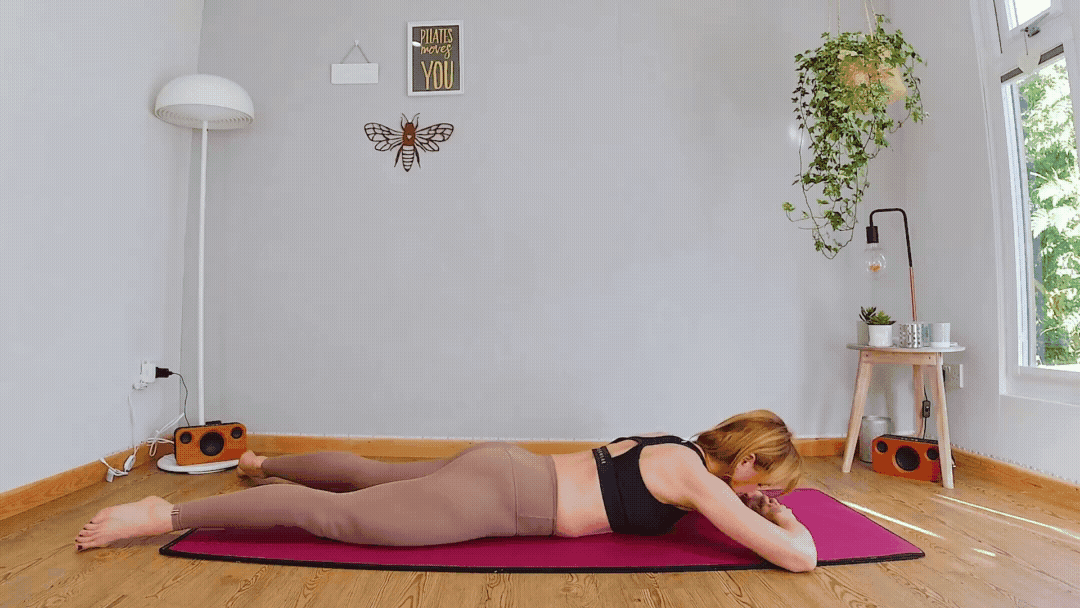
This exercise starts in a prone position. Lying on the floor face down, pelvis and lumbar spine in neutral, legs hip width, the elbows are bent with the finger tips together. Rest your head on the back of your hands. Relax your shoulders.
Initiate with your head, lift your head and then begin to lift your chest, focusing on the breast bone being forwards. Try to keep the movement sequential, think neck, then cervical and thoracic spine, one vertebra at a time. Keep a constant connection with the deep abdominal muscles.
Return the spine and head sequentially back down onto the mat.
Muscles That Affect Length in Pilates
Pilates has an effect on several major muscles in the core and spine that can improve posture and cause someone to look and feel taller as a result. These are some core muscles affected by Pilates exercises (Source: Spine Health):
- Erector spinae: The erector spinae is a group of muscles either side of the spinal column that begin at the base of the hips and continue up the length of the back. The muscles of the erector spinae help to keep the back vertebrae straight and also help facilitate twisting motions to either side.
- Internal/external obliques: The internal and external obliques are a set of side muscles in the torso that work together to allow for twisting side-to-side motions. The internal obliques are located underneath the external obliques in the body cavity. Working your obliques can help prevent strain and injury as a result of exercise. (Source: NFPT)
- Transverse abdominis: The transverse abdominis is a core muscle that lies just above the curve of the pelvic bone. The purpose of the transverse abdominis is to keep the abdominal contents compressed and held in place. By doing so, the transverse abdominis contributes to spinal stability. (Source: Yoga Anatomy)
- Rectus abdominis: The rectus abdominis is the series of muscles that cross the front of the abdomen and form the group of muscles commonly known as the “six-pack”. Rectus abdominis muscles are located symmetrically to either side of the body’s lateral line and are responsible for promoting core stability. (Source: Healthline)
- Hip flexors: Hip flexors are a group of muscles located near the top of either hip, and are responsible for the ability of the hip to move within the socket of the hip joints. Poor hip flexor flexibility can lead to sensation of having tight hips and limited mobility with age. Weak hip flexors can also contribute to issues like hip displacement.
Even though science doesn’t support the idea that Pilates makes you physically taller, science has shown us exactly which muscles are affected by Pilates that can help someone’s posture improve to the point they appear taller.
Pilates and Scoliosis
Science says that Pilates doesn’t make people physically taller, but there are exceptions to every rule. One of these exceptions is when Pilates is used as a therapeutic intervention in cases of scoliosis. Scoliosis is a spinal condition where the spine curves slightly to either side rather than straight up and down.
Scoliosis commonly affects children during the rapid growth that happens right before they hit adolescence. The spine growing more quickly than the rest of the body can cause it to become crooked and compressed.
In many cases, mild scoliosis improves on its own as developing children gain the height to go along with their frames. However, in some cases, scoliosis can be disabling.
Pilates is one way that mild cases of scoliosis can be successfully treated by encouraging spinal alignment and increasing strength of the muscles to prevent difficulties associated with scoliosis such as bad posture and difficulty breathing. While Pilates doesn’t reduce the curvature in a spine afflicted with scoliosis, it can train the core muscles surrounding the spine to support it.
Tips for Using Pilates to Get Taller
Even though Pilates can’t make you physically taller, it can enhance the height you do have. Here are a few extra tips for using Pilates to add height:
- Be consistent. You can’t expect to get any kind of real results from taking a Pilates class once every couple of weeks. Results will be much quicker coming if you can commit to a regular Pilates schedule preferably around three times a week for optimal results.
- Be patient. Starting Pilates doesn’t mean you’re going to wake up and gain two inches in a week or two. Instead, focus on the key concepts of Pilates that contribute to a longer figure and a straighter spine.
- Work on your posture outside Pilates. Taking regular Pilates classes can help you be more conscious of your posture, but you won’t see much benefit from Pilates if you don’t address poor posture when you’re outside the Pilates classroom.
If you’re looking for a magical solution in Pilates for getting taller, you’ll be sorely disappointed. But if you’re looking for a way to enhance your natural height and cut a long lean figure, Pilates is a great place to start.
Pilates Makes You Stand Taller
The science shows that Pilates doesn’t have much tangible effect on your physical height, but the different effects Pilates does have on the body can easily create the appearance of a taller, longer silhouette. Pilates also offers many health benefits that increase self-confidence and benefit overall health, not just spinal health.
